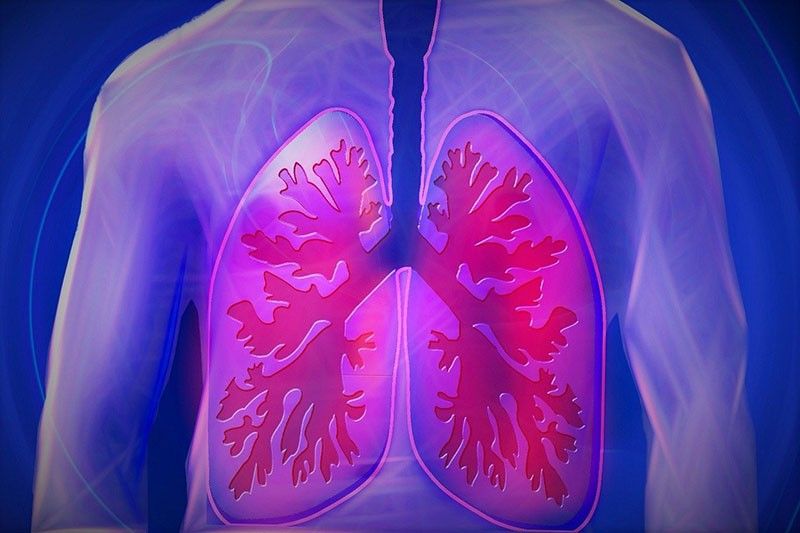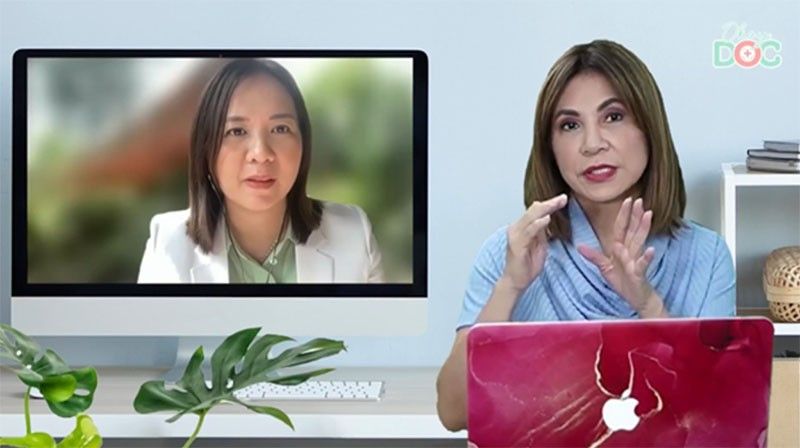Illuminating ILD and awareness for wellness


Have you heard of Interstitial Lung Disease (ILD)? Like most people, you may not have – ILDs are, after all, a group of lung disorders that are significantly rare compared to other pulmonary diseases.
But as uncommon as it is, ILDs are usually severely life-threatening. Diagnosis of this group of diseases can take up to months and more, and there is no cure apart from the option of a lung transplant, as ILD treatments can only seek to improve your symptoms.
How do we protect our lungs, and what can we do for our friends and family who may be afflicted with ILDs?
There was a lot we found out during an insightful interview with Dr. Gilly May Santiago-Europa, a pulmonology expert from St. Luke’s Medical Center. We talked to Dr. Gilly for an episode of Okay, Doc that was dedicated to ILDs, just in time for the observance of Rare Disease Month in February.

According to Dr. Gilly, most ILDs are idiopathic, meaning there is no clear sign of the cause of the disease. “ILDs can come from toxins in your environment, such as from occupational exposure,” she told us.
ILDs are characterized by the scarring or fibrosis it causes on the tissue walls of our lungs’ air sacs, which thickens and stiffens the tissues, causing difficulty in breathing and can lead to other pulmonary complications.
One of the biggest challenges with an ILD is in its diagnosis. Dr. Gilly pointed out that ILDs have a lot of similarities with other lung-related conditions: coughing, shortness of breath, and body pain. “But what eventually sets ILDs apart is that its symptoms persist across weeks and months.”
Unfortunately, there is no diagnostic test specifically designed to diagnose ILD in a patient. Instead, our pulmonologists listen for a crackling type of sound from the lungs and find confirmation through CT scans and pulmonary function tests.
The treatment for this type of disease involves the use of anti-fibrotics to slow down the irreversible scarring effect ILD has on lung tissue. ILD has no cure outside of getting a lung transplant, where according to Dr. Gilly is usually the last recourse opted only when “the lungs are no longer stable, or when the pulmonary system begins to undergo rapid lung decline.”
Living with ILD
The journey of an ILD patient is no joke. The physical, emotional, and financial burdens that come with the disease can be drastic and end up changing a lot of things in their lives.
Dr. Gilly shared the story of one patient who had to quit her job and give up providing support to her own family. At the same time, she was losing weight, had difficulty talking and had to contend with how costly her treatment and maintenance were.
As ILD poses patients against one of the biggest fights of their lives, how do we show them our support?
“Just being there for the patient is very important,” Dr. Gilly pointed out.
But apart from the company we offer our loved ones, Dr. Gilly also advocated in particular for support groups.
“Help them look for support groups and refer them to support groups that you think would be very helpful for them,” she suggested. These communities allow ILD patients to connect with people in the same situation, help them navigate the patient’s journey, and motivate them to keep fighting.
ILD support groups have become an invaluable part of treatment due to the sense of community it provides, protecting patients from feeling isolated and alone because of the disease.
While ILD is yet to have a cure, Dr. Gilly offered hope for the quality of life that patients can enjoy despite the persistence of the disease. The key, she revealed, is early diagnosis.
Hope for ILD patients
It's vital for ILD patients to be diagnosed early before fibrosis takes over the lungs. If it is identified early, anti-fibrotic medication can help the patient slow down the rate of fibrosis, and effectively give the patient years more to live.
In fact, the treatment of ILD is a recent development, according to Dr. Gilly, "when I was still a student, interventions such as fibrotic medication were nowhere to be found yet."
"And if any, patients had to order their medication overseas," as it was not as accessible as it is today.
Dr. Gilly also helped clear up the misconception that ILD or pulmonary fibrosis gives you only months to live upon diagnosis. “It’s a myth! There are many patients with ILD that we have encountered who continued to live with the disease for years,” she remarked. The doctor assured us that patients can live with ILD for as long as there are continuous follow-ups and monitoring with their doctor.
"This is possible because ILD is actually something patients can live with. The real threat is when complications arrive," which are usually infections.
“But ILD is not a death sentence,” she concluded. “We always tell our patients to look at the positive side of everything – there are still many things that you, as a patient, can do.”
As ILD and other rare diseases continue to get the attention they deserve, it is translating to better support for diagnosis and treatments. A more recent example of this is the multidisciplinary approach that, according to Dr. Gilly, “is becoming more recognized for how helpful it can be to patients.”
“In 2023, we launched different ILD centers to help us in the multidisciplinary approach,” said Dr. Gilly, as the medical community continues to recognize that rare diseases in particular require more doctors for better and faster diagnosis. “We can use the help of rheumatologists, pulmonologists, radiologists, among others.”
These ILD centers can be found at St. Luke's Medical Center, Makati Medical Center, Philippine Heart Center, University of Sto. Tomas, and the Lung Center of the Philippines, and according to Dr. Gilly, “other hospitals in the Philippines are in the process of developing their own."
Awareness, the first step in prevention
Protecting our lungs begins with educating ourselves about how we can take better care of it. Dr. Gilly recommended visiting their social media accounts to learn more about the information shared on these platforms. If you’re interested, you can join their Facebook group named Occupational and Interstitial Diseases Philippines and follow their Instagram @ILDPH2023.
And if we want to continue helping doctors like Dr. Gilly and their patients in the fight against ILD and other rare diseases, let’s continue to spread awareness and the right information about these conditions.
“We want our patients, and their families, to be aware,” Dr. Gilly told us. She also reminded us about watching out for the symptoms: persistent shortness of breath, coughing, and weight loss, and consulting our doctors if these refuse to go away.
My conversation with Dr. Gilly raised my appreciation for doctors treating rare diseases such as ILD, who continue to approach diagnosis and treatment with clear patience and compassion. I believe this is a crucial part of addressing the needs of patients – as in diseases such as ILD, its consequences are not felt by just the patient, but faced by their family and loved ones as well.
The observance of Rare Disease Month in February and National Lung Month this August is a timely reminder to pay attention to our lungs and our health. I hope we can all keep it in mind more often: let's strive to adopt better lifestyle habits, exercise more often, and kick unhealthy vices.
And through our own little ways, let’s continue to share our support for ILD patients and their families, and pray for their confidence, strength and grace in this fight.
This is supported by Boehringer Ingelheim.
------
Follow my social media accounts JingCastaneda: Instagram, Facebook, YouTube, Tiktok and Twitter. Please share your stories or suggest topics at editorial@jingcastaneda.ph.



















